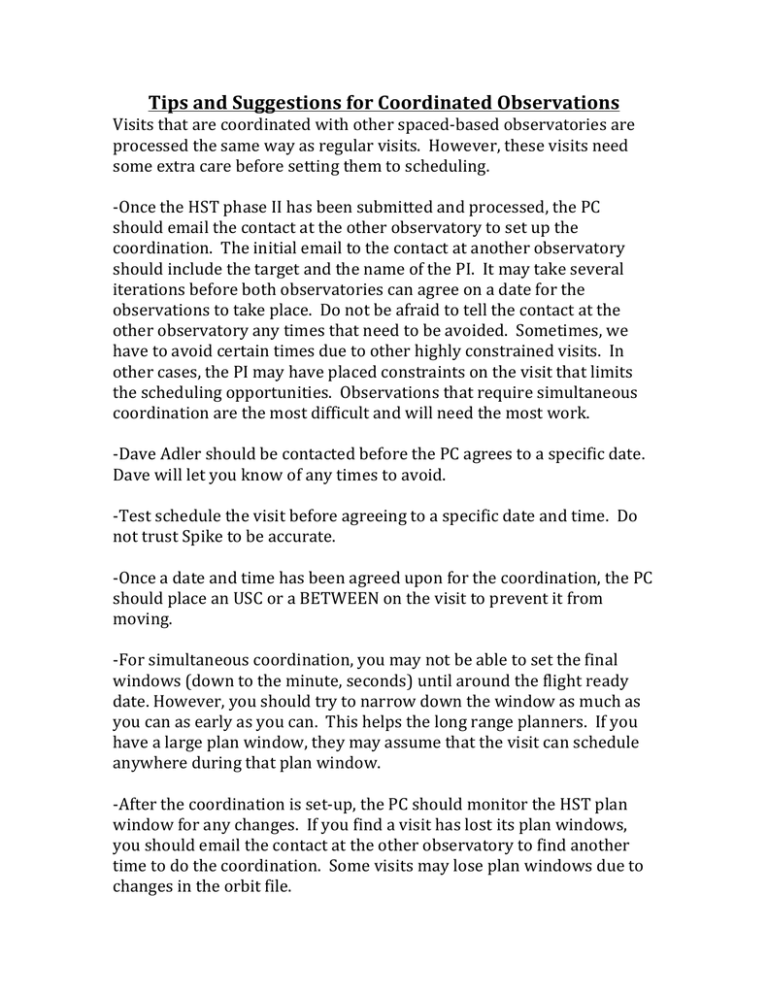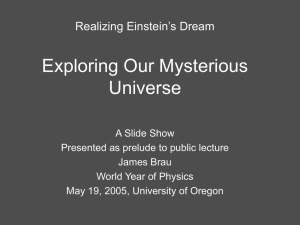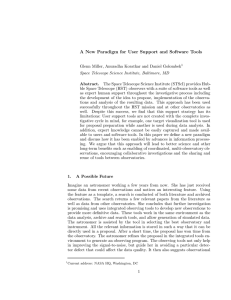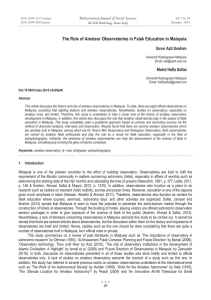Document 11027484
advertisement

Tips and Suggestions for Coordinated Observations Visits that are coordinated with other spaced-­‐based observatories are processed the same way as regular visits. However, these visits need some extra care before setting them to scheduling. -­‐Once the HST phase II has been submitted and processed, the PC should email the contact at the other observatory to set up the coordination. The initial email to the contact at another observatory should include the target and the name of the PI. It may take several iterations before both observatories can agree on a date for the observations to take place. Do not be afraid to tell the contact at the other observatory any times that need to be avoided. Sometimes, we have to avoid certain times due to other highly constrained visits. In other cases, the PI may have placed constraints on the visit that limits the scheduling opportunities. Observations that require simultaneous coordination are the most difficult and will need the most work. -­‐Dave Adler should be contacted before the PC agrees to a specific date. Dave will let you know of any times to avoid. -­‐Test schedule the visit before agreeing to a specific date and time. Do not trust Spike to be accurate. -­‐Once a date and time has been agreed upon for the coordination, the PC should place an USC or a BETWEEN on the visit to prevent it from moving. -­‐For simultaneous coordination, you may not be able to set the final windows (down to the minute, seconds) until around the flight ready date. However, you should try to narrow down the window as much as you can as early as you can. This helps the long range planners. If you have a large plan window, they may assume that the visit can schedule anywhere during that plan window. -­‐After the coordination is set-­‐up, the PC should monitor the HST plan window for any changes. If you find a visit has lost its plan windows, you should email the contact at the other observatory to find another time to do the coordination. Some visits may lose plan windows due to changes in the orbit file. -­‐A few weeks before the visit is scheduled on a calendar, the PC should email the contact at the other observatory to make sure the coordination will take place. It is important to be pro-­‐active when dealing with coordinated observations. Do not assume that everything is fine at the other observatory, and everything will take place as agreed. Double check! Simultaneous observations will require many emails the closer you get to the visit being scheduled on the calendar. -­‐Keep in mind that schedulers at the other observatories build their calendars earlier than we do. The coordination should be set up before any calendars are built. (ToOs are the exception.) -­‐For simultaneous coordination, it is recommended that you put in a specific scheduling comment in addition to placing an USC or BETWEEN on the visit. The scheduling comment should tell the calendar builder exactly when the visit needs to schedule. Remember to update the comment if something changes. Also, it does not hurt to email the calendar builder for the week the simultaneous coordination will take place. A quick email with the start time can really help the calendar builder. Finally, it is STRONGLY recommended that the Friday notification for the visit be checked soon after it is sent. Double check that the visit has been scheduled at the correct start time. If it has not been scheduled properly, please contact the calendar builder right away. -­‐It is a good idea not to set simultaneous coordinated visits to scheduling until around the flight ready date. If you set the visit to scheduling months in advance, it implies to the long range planners that the visit is ready to go. Also, it is easy to forget about the visit if it is set to scheduling. If the final coordination is not set up, the visit is not ready, and it should not be set to scheduling! -­‐If HST safes before the visit executes, and it is not likely we will recover before the visit is planned to take place, email the contact at the other observatory and the PI. The PI will need to decide if the observation at the other observatory should be pulled (if it can be). -­‐Other observatories can enter safe mode just like HST. If you are contacted that another observatory is in safe mode, you should contact the PI. If the PI wants the HST observation pulled, contact Bill Workman to see if it is possible. If it is not, the PI will have to file a HOPR. -­‐Occasionally, a PI will request a coordination that was not mentioned in the phase I. In general, we try to do the coordination. However, we do not guarantee it. If the PI feels that the coordination is a requirement, the PI should file a change request with the TTRB. -­‐If you need help setting up a coordinated observation, please see Beth or one of the more experienced PCs. Note: For ground-­‐based coordination, the PI usually handles the coordination or will provide a contact to the PC. We do not have contacts at ground-­‐based observatories.






